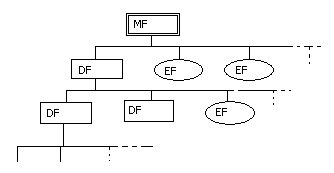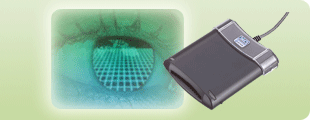|
Smart card OS is a program that runs on a processor embedded in the Smart card. Such processor cards have RAM, ROM, EEPROM for storage. The OS is stored in the ROM, user data in EEPROM and temporary data in RAM. The user data is organized in file structure.
ISO/IEC-7816 part 4, 8 and 9 are the standards that define the OS behavior for such cards.
Smart Card File Structure
File structure of Smart card is a tree based file structure. There are two types of files in the Smart card:
- Directory file or Dedicated file (DF) and
- Elementary file (EF).
DFs can have other DFs and EFs under it, while EFs are used for data storage. The root DF is called Master file (MF). There will be commands specified by the operating system for reading and writing data into these files. Before doing any operation on any file, the file has to be 'selected'. This can be done through a command for that purpose. The MF is implicitly selected when a card is inserted in the reader.
Figure: Smartcard File Structure

Elementary Files
EFs are of two types
- transparent unstructured file
- record structured file.
The record structure files are of two types based on the record length
- fixed length record files and
- variable length record files.
The record files can be arranged as
- linear record files, or
- cyclic files.
Figure: Types of EF Files

|



